
Welcome to the inaugural Bay Area Kiteboarding Newsletter! BAK and the 411 will be regularly publishing a comprehensive overview of events and issues important to our community. Be safe. Be well. And send it!
In This Issue
- Bay Watch – A quick overview of site issues around the Bay.
- The Coast is Lit! – Check In Before You Head Out.
- Why Are Spring Winds so Dangerous? – Frontal vs Thermal.
- So You Want to Kite Crissy? – Are You Ready to Swim?
- ‘Mac’ Steps Down From the SFBA – Jim McGrath leaves the SFBA after 20 years of advocacy.
- Why the Wing Ding? – Chip Wasson explains the allure and popularity of winging in SF.
- The Untold History of Kiting? – Joe Kool has a story to tell, and not everyone wants to hear it.
Bay Watch
BAK and the 411 will keep you updated on any issues that concern the community. Here’s a quick overview of what’s happening:
South Bay
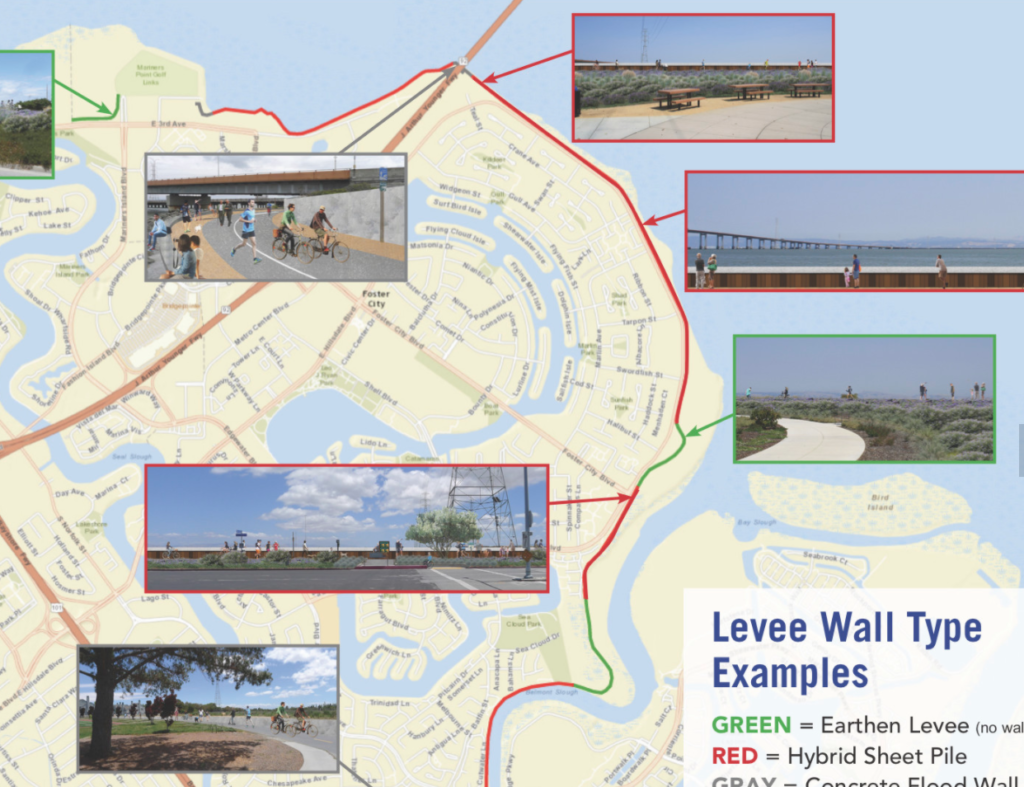
Crisis at 3rd Ave?
The Foster City levee project (https://fostercitylevee.org) has been in gestation for years and a group of locals have organized to protect access during and after construction. The city laid off all of the people the group was working with, however, and inserted a City Manager who’s unfamiliar with the agreements. And now new construction plans threaten access to this key spot. Mandi Browning (mandibrowning71@gmail.com), Anthony Del Balso (anthony.delbalso@gmail.com) and Steve Gunn (stevengunn@comcast.net) are on it, working with the SFBA and will be providing regular updates through BAK.
The next community meeting is March 11 (https://fostercitylevee.org/participate-in-the-next-levee-project-community-update-on-march-11/). If you use this spot or value keeping the kiters at 3rd from swarming your spot, please support Mandi, Steve and Anthony in their effort to keep this spot open during the three year construction.
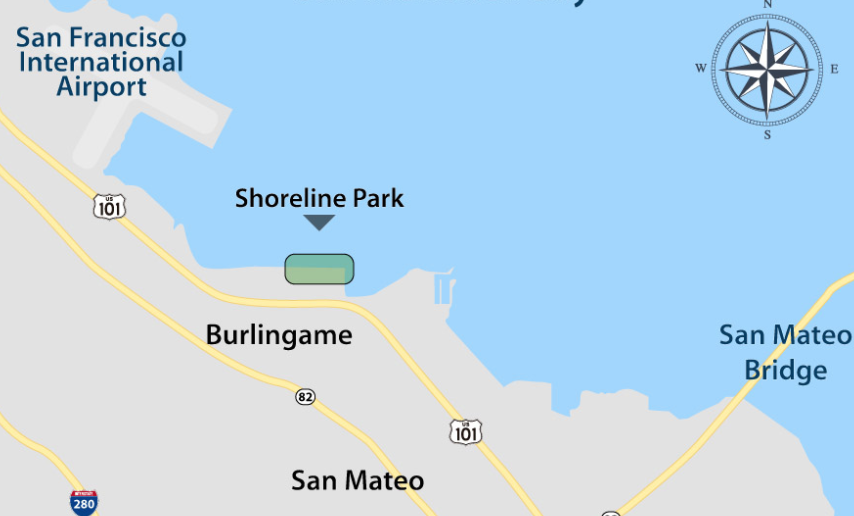
New Launch at Burlingame a Bust?
Burlingame Shoreline Park is in the planning process and continuing to refine its design to include a launch area suitable for kiters, windsurfers and wingers. This would be a new access point on the Bay http://shorelineparkburlingame.org/background/ (and you thought the power lines at Sherman were scary…try kiting with incoming Dreamliners bumping your kite!). The designs reviewed by the 411, however, show a north-facing ramp launch bordered by rip rap—similar to the launch at Point Isabel. As shown, it will accommodate only advanced windsurfers and wingers but is unfriendly for intermediates and kiters. If you would like to have a new kite spot near Burlingame, please advocate through the SFBA info@sfba.org.
Crissy Field
There is a major redesign of Crissy Field in the planning phase https://www.nps.gov/goga/east-beach.htm. The National Park Service wants to pave most of the lawn, widen the promenade and make other changes that the SFBA fears will compromise the site. Local site steward and safety stalwart, Jeff Finn, is following this closely and posts updates to the SFBA site (https://www.sfba.org/blog).
East Bay
- Berkeley is initiating the Berkeley Marina Area Specific Plan aimed at improving amenities and infrastructure—including the possible creation of a ferry terminal. This is mostly relevant for windsurfers and wingers using HS Lordships or the cove, but the creation of a ferry terminal will affect kiting throughout the area. Reach out to David Fielder for more info: davidfielder@comcast.net.
- The SFBA made sure that planned development at Toll Plaza won’t interfere with access by restricting parking. But this remains an informal site, and the kiters that use it don’t have a license agreement with the Park District, so their voice won’t necessarily carry the day. In the long term, flooding at the toll plaza will lead Caltrans to do something, and sea level rise will cause the beach to erode. Jim McGrath is working through ‘East Bay Parks For All’ on a shoreline resiliency project to address not only the issues at Toll, but all sites from Toll to Pinole.
- Albany Beach/Racetrack has become incredibly popular since the Bay Trail redesign. The 411 continues to advocate through the SFBA for upgrades that will make the site safer and designate a formal launch and landing area.
North Bay
- Dillon Beach: In addition to parking rates dropping, there will soon be free parking between sunrise, when the gates are opened, and 9 a.m. year-round. Access will also be free between 3 p.m. and sunset during winter months and between 6 p.m. and sunset in the summer. A new annual pass will be $160; Parking is free at all times for anyone with a State Parks Golden Bear Pass, a Marin County Free Library parks pass, or a Sonoma County park vehicle entry pass, and for anyone with an A.D.A. placard.
Sherman Island
Update from Don Ross of SIKO
- Official day the porta potties will be moved into “the Sign” and “the Access Pit” are April 2 (unless it is exceptionally rainy).
- The Annual spring “Earthday Cleanup” is scheduled for April 24th 9:00 to noon more to come on this.
- Preliminary plans for another 411/SIKO/SFBA ‘Opening Day’ Safety Meeting BBQ in early MAY – depends on covid concerns.
- SIKO/ RVWA fundraiser – on hold till covid is behind us.
- RVWA kids camp on hold.
The SFBA, SF Bay Water Trails and the 411 have been working to create a comprehensive plan to present to local and state regulatory agencies that will preserve existing launches, protect them from future development projects and identify strong candidates for future launches. You can see the result of this work here: http://sfbaywatertrail.org/wp-content/uploads/2019/10/DRAFT_BayAreaBoardsailingPlan_Sept2019.pdf
The Coast is Lit!
But check in before you head out!
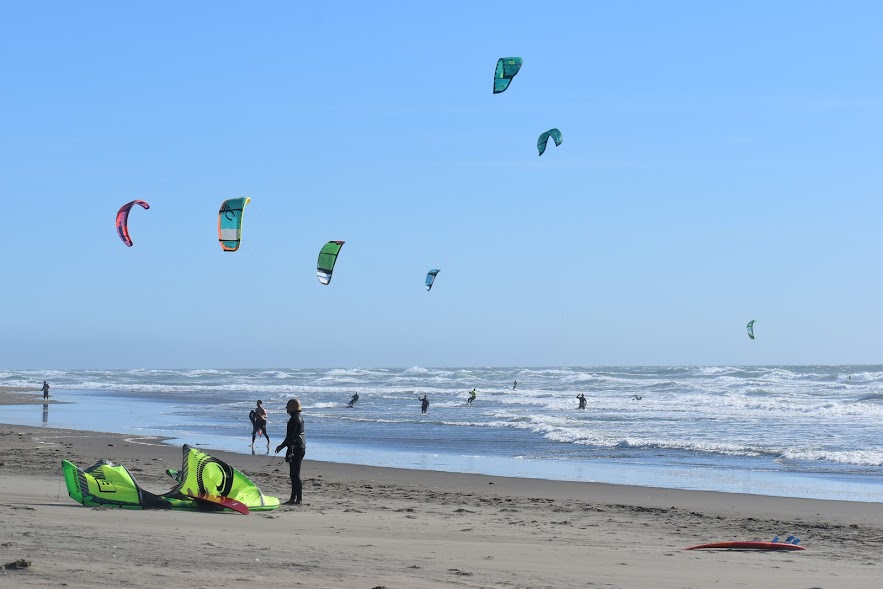
Big Spring winds are here and things are already hot on our coastal spots. So it’s time to check our gear and remember that some of our worst incidents occur in the early season due to heavy winds, bad gear and poor choices. Just a few simple steps can make a huge difference for you and everyone around you.
Jane From Boardsports Shares Her Quick ‘Pre-Flight’ Checklist:
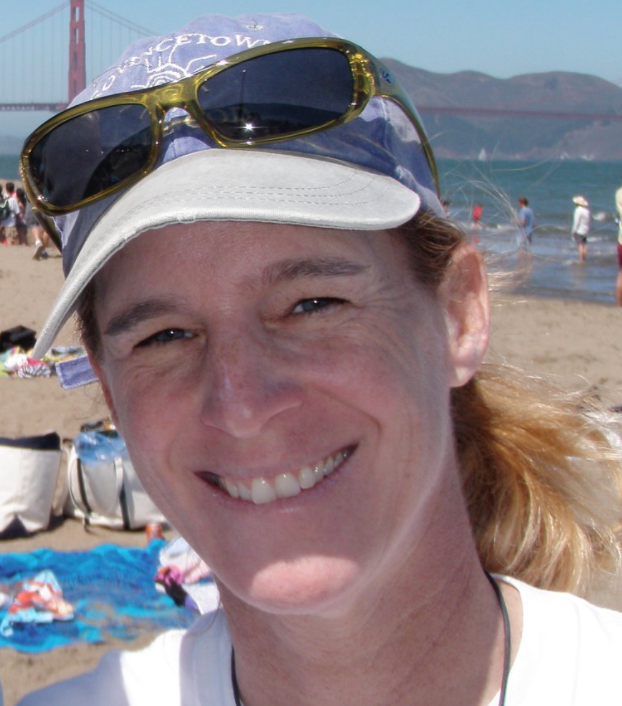
- Inflate your kite and make sure there are no leaks (inflate kite and leave it for a couple of hours). Inspect the canopy and leading edge for any pin holes or scuffs. Repair small pin holes or tears with a kitesurfing repair kit. For big rips, get your kite professionally repaired. Make sure your kite is clean and free of sand. Don’t rinse your kite with fresh water, as salt water prevents mold growth. Use your hand to gently brush the sand off your kite.
- Inspect your bar and safety systems: test chicken loop release, inspect lines for knots, inspect bridals, test kite leash, tune bar (make sure all 4 lines are same length). Rinse your bar and lines with fresh water after every session, and thoroughly rinse the chicken loop/safety release, .
- Inspect your harness (look for points of failure in the straps, spreader bar). Make sure you have a good warm wetsuit if riding in colder water.
- Use a helmet and impact vest. You only have 1 brain and 1 set of ribs, protect them.
- Before you ride, be sure to check with locals at every site to get advice on rigging protocols, site guidelines, and weather conditions. In the SF Bay Area, Spring frontal winds can be really strong and gusty. So if it’s nuking and it’s your first day of the season, consider just watching from the beach. When in doubt, don’t go out.
Jane breaks it down in detail here: https://boardsportscalifornia.com/kiteboarding-pre-flight-check-site-guidelines-right-of-way/ and don’t miss Jane’s great library of helpful videos.
BAK’s quick safety refresher:
- Right of Way Rules
- Marine Radio Guide
- Thinking of trying a new site? Get expert advice from a local. 411 Beach Ambassadors
- Check out our site write-ups on BAK to familiarize yourself before you ride: Sites
- Find a pinhole in your kite? Ding in your board? Need new gear? Kite Schools, Shops, and Repair in the Bay Area
Why Are Spring Winds so Dangerous?
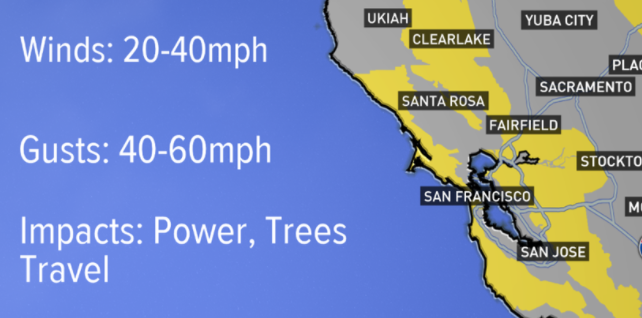
A lot of our serious incidents occur in Spring, and there’s a good reason for it: Spring winds often reach Gale Force on the coast and even inside the Bay.
During spring an area of high pressure over the Pacific gradually strengthens and moves north. Meanwhile, longer days and a more direct sun angle result in increased warming over land, particularly in the interior valleys. Warming at the surface causes air to expand and air pressure near the surface to fall. The resulting difference between higher pressure over the ocean and lower pressure over land brings about increasingly persistent west to northwest winds during the spring months. Spring is generally the windiest time of the year in the Bay Area, but these winds are more variable than Summer winds.
During the months of June, July and August the eastern Pacific high is well established offshore while a trough of low pressure is a nearly a constant feature over California’s interior. The inland low pressure is often referred to as a “thermal trough” because its formation and strength are primarily driven by robust daytime surface heating that persists throughout the great Central Valley during the dry and sunny summer months. The pressure difference between the eastern Pacific high and the thermal trough over the interior maintains both northwesterly winds over the coastal waters and onshore winds through the coastal gaps and across the Bay.
Check the links below for more info:
Wren Dougherty’s great write up: https://docs.google.com/presentation/d/1otMFWz4B0koy95Gihnt5sFM2AjBBVpOPoYyEe19ZdB0/edit
So You Want to Kite Crissy?
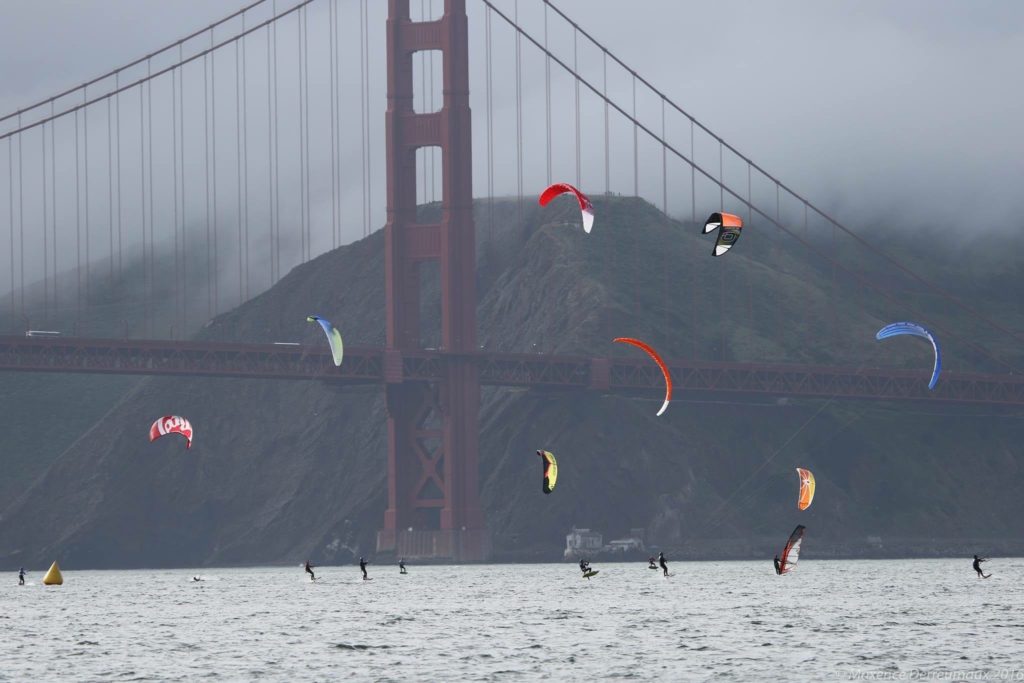
400 billion gallons of water traveling in excess of 5mph move through the Golden Gate every day. This is important to know if you plan to kite Crissy Field, because if the wind dies or your equipment fails, you can travel far from the launch very quickly. You need to know what to do if you’re caught floating in either an ebb (water rushing out to sea) or flood (water rushing into the Bay). Read the Crissy Field guide and reach out to the 411 before you ride.
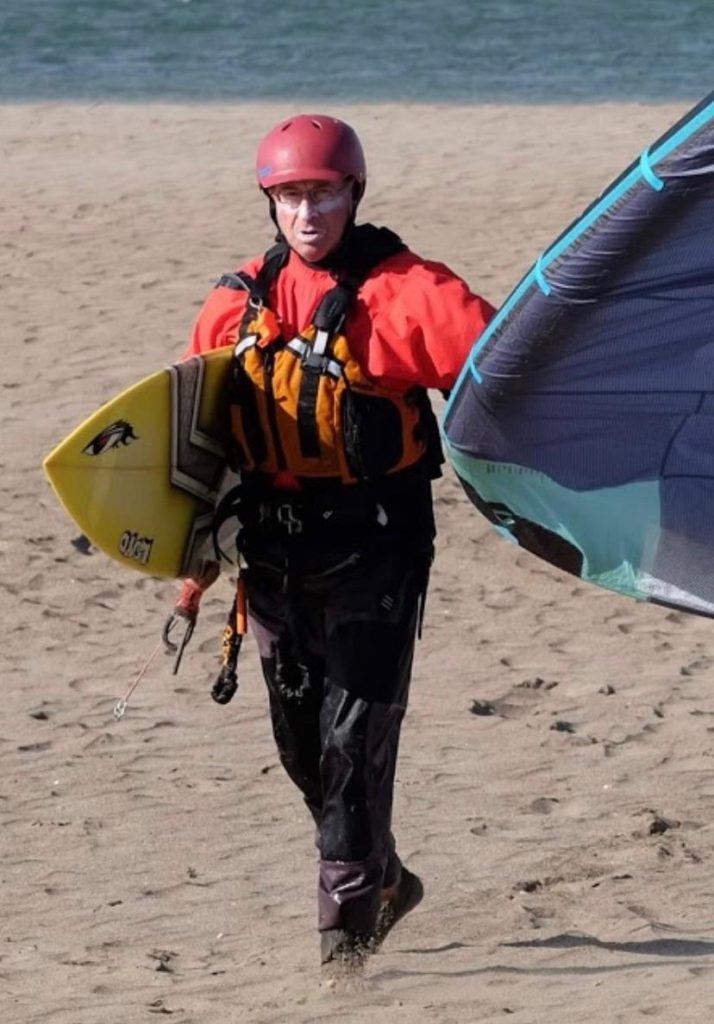
- If you kite Crissy regularly, it’s not if, but when, you will be facing a swim in. Consider a life vest or additional floatation from an impact vest.
- A marine radio is the quickest and most reliable way to coordinate with emergency services for you or others in distress. Check out the Marine Radio Guide for product recommendations, usage and hailing protocol.
‘Mac’ Steps Down From the SFBA
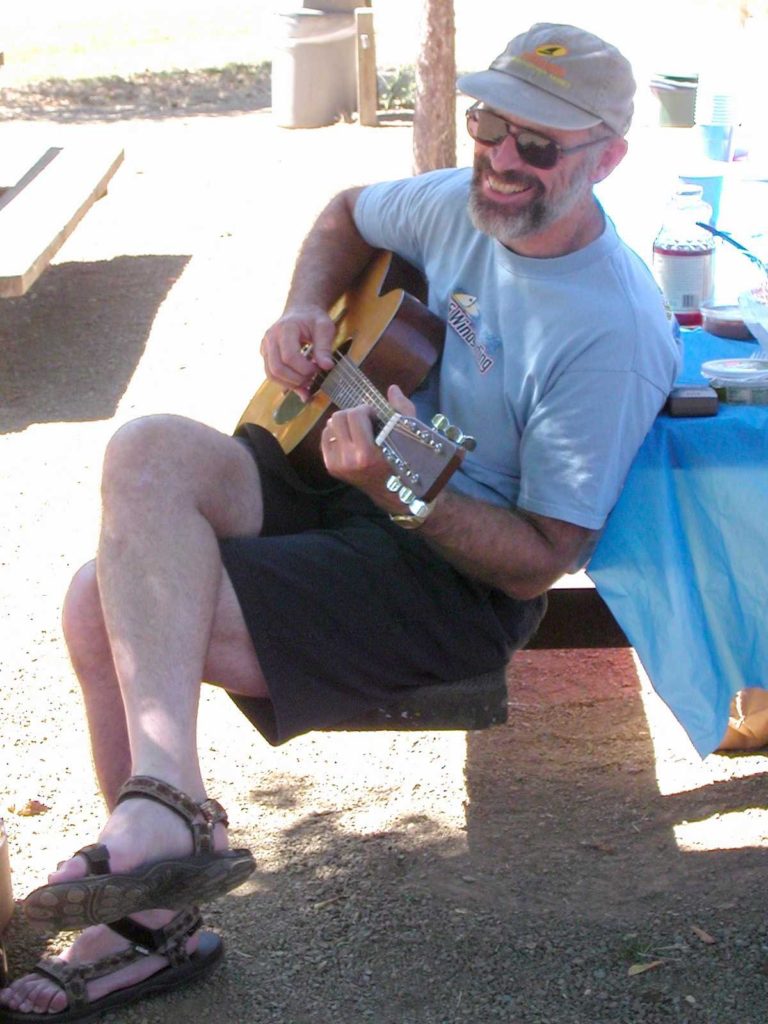
While there are many people around the bay who work to protect, improve and expand our sites, few have done more than Jim McGrath. Jim has worked in the environmental field for over 30 years, starting at the U.S. Environmental Protection Agency in 1972. He spent five years with the U.S. EPA, fourteen years with the California Coastal Commission, and sixteen years with the Port of Oakland, working on a variety of projects and addressing a range of environmental issues.
Jim received his BA in chemistry and history in ‘73 and his M.S. in Civil Engineering in ‘83 from UCB. He has worked on a number of habitat restoration projects, including the Martin Luther King, Jr., shoreline in Oakland, the Sonoma Baylands, Middle Harbor, Hamilton and Montezuma wetland projects, and the South Bay Salt Pond Restoration Project. Since retiring from the Port of Oakland in 2005, he has served on various non-profit boards including the San Francisco Estuary Institute, US Windsurfing, San Francisco Boardsailors Association, Bay Access, the City of Berkeley’s Waterfront Commission and the newly formed ‘East Bay Parks for All’. An avid windsurfer and kayaker, Jim spends over 150 days on the San Francisco Bay each year.
Jim’s cross-disciplinary training is part of what makes him uniquely qualified to advocate for the sport and navigate the bureaucratic matrix of regulatory agencies. Some of his most important work was done with the SFBA, which he joined in 1999, when he was involved as a Board member during the planning process for the East Shore State Park. This effort resulted in a new launch site and then for the next 15 years he supported the plan that was adopted by the Coastal Conservancy that promised funding for improvements at existing launch sites throughout the bay. This included the enactment of the Bay Trail Act.
Jim cites his work with Peter Thorner to ensure access at Treasure Island as one his more important efforts. The City of SF’s plan for Treasure Island now provides two water access sites–the existing cove and an upwind site at the northwest corner of the island. Because TI was a military property that was excluded from the state’s coastal zone, there were technically no access rights. With Jim’s help, the SFBA was able to secure access not only to the existing launch but also a new one.
Another important effort involved making changes to the Bay Plan’s recreational policies, adopted by BCDC in 2006, which designated all of our existing launch sites. The Bay Plan has the force of law and protects from damage all the designated sites. Those policies formed the basis for the negotiations over the levees now under construction at Foster City. Jim has also been instrumental in working to create an updated version of a plan for non-motorized access to the bay that includes a more expansive listing of launch sites with new requirements for kiting.
David Fielder, longtime windsurfer and East Bay access advocate notes, “I’ve worked closely with Jim for well over a decade, initially on addressing the potential impact of siting a WETA ferry terminal near His Lordships in Berkeley in 2008. More recently, Jim paved the way for our successful effort to renovate the windsurfing launch site at Pt. Isabel. Jim is a fount of waterfront regulatory wisdom and unusually adept at navigating the shoals of Bay Area bureaucracies.”
Steve Gunn, a stalwart for South Bay access advocacy adds, “Mac’s wealth of knowledge and contacts has been instrumental on many Bay access issues I’ve been involved with over the years…always been very easy to just give him a call for assistance.”
Jim was also key in recent access improvements in Berkeley, including new docks, new pavement, and a spiffy rigging area at the Marina. He was central to the redesign of Racetrack in Albany and is currently focused on a major shoreline resiliency project in the east bay.
In case there were any doubts about Jim’s unique contributions to our sport, naval architect and 6-term Chair of the Berkeley Waterfront Commission, Paul Kamen says, “Jim McGrath has been a vital counterbalance to some of the more extreme voices calling for exclusionary urban waterfronts. He has the technical chops and the advocacy skill to keep the “open space fundamentalists” from dominating shoreline land use planning. We will never have a better advocate for windsurfing and other small craft activities working on our side.”

The SFBA has an open call for new board members. Interested parties should apply by filling out the following form: https://forms.gle/mScgVyiGbgfMhbebA
Why the Wing Ding?
by Chip Wasson
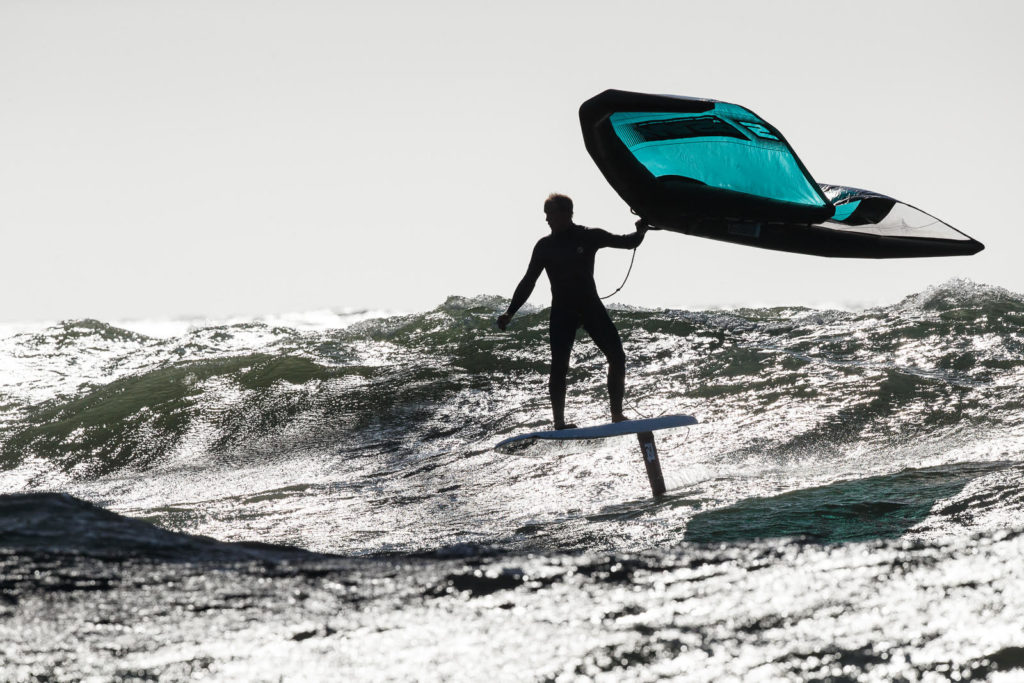
Around the Bay Area and increasingly around the world you may have seen an unfamiliar little wing scooting across the water held by a rider atop a hydrofoil. Just as most people have made the transition from the windsurfer to the kiteboard, there is a new thing buzzing around the waters colloquially called the Wing Ding by those in the know. The wing arrived about 2 years ago and has really taken off over the past year (reports say wings are outselling kites 30/1 in Maui). Just take a look at Crissy Field: these gnats infest the bay whereas only two years ago you would have seen primarily kites and some remaining windsurfers smattered into the mix. So, here is the question we are trying to answer: “why is the Wing Ding getting so Ding popular?!”
The Wing Ding offers broad accessibility. Anyone can lift a wing into the air and catch the passing breeze. If the breeze is too strong or they are uncomfortable with the power they can simply hold on to the front of the wing with one hand and let the wind pass by with emotional comfort. On a kite, once the kite is in the air it is game on in terms of focus, concentration and power until the kite is safely landed into someone else’s grasp and lain inertly on the beach. For many there is something nerve racking about having a kite in the air constantly offering pull, power and the potentiality for catastrophe. With the Wing Ding all of this anxiety flies away. In this way the Wing Ding is somewhat akin to the stand up paddle board in that there is little element of fear for the situation getting out of control. This allows broad accessibility to those who might not be up for such an adrenaline inducing experience as the kite. If one does not like what is happening with the wing ding session, they can also simply lay down on their board and safely paddle to safety. Very comforting indeed!
The Wing Ding offers simplicity of equipment. Much of the beauty of surfing is that all you need is a board and a leash and there is a certain freedom in that simplicity. In terms of equipment The Wing Ding is not quite as free as surfing but it is closer to freedom than the kite or the windsurfer. The windsurfer becomes an unwieldy large piece of equipment once the sail is attached to the board. The kite is unwieldy because of lines, bars, tangles, danger, unpredictability, injury, potential death, etc. The wing ding is two detached pieces of equipment that can be put to rest at any desired moment. This is comforting to the masses and promotes participation.
Wing Dinging seized an opportunity to grow locally. In the bay area there is a robust fleet of people racing on foils and kites. There is also great participation and history in windsurfing. In 2020, Covid hit, racing was cancelled and what could be considered “the Crissy Field effect kicked in.. The local kite racing fleet seized the opportunity to shift their focus from speed on the race course to learning something new and dynamic. Windsurfers also started to switch over as the wing is very similar in sensation to the windsurfer and lord knows those windsurfers were ready for something new. Crissy was so conducive to this sport as there was a focused wind and water population primed to try it. Crissy is sailing home to many talented riders who were early adopters of the wing and led the charge into what was possible. Crissy also has great setups with waves, swell and ship wakes to play and innovate on. Once the kite and windsurfing groups started to participate the rest of the water world started to take notice and new participants started to fall into line.
The Wing Ding offers ease of launching. With a kite, one needs ample safe space to organize lines and launch the kite. In most situations the rider also needs help from another person to launch and land the kite. The Wing Ding can be safely put in the water from anywhere. A boat and a rocky shoreline are perfect places to slip into the water and safely, paddle for a bit and sail away. Voila, anxiety and stress free participation!
The Wing Ding offers access to the sensation of flight. Foiling on a board is said to be like the sensation of flight. Everyone wants to fly, right? The Wing Ding offers a safe way to fly. This foil flight can come in many different forms. One can ride a larger, slower, fatter foil and be able to foil up in very little wind with a larger board. Also one can ride a smaller faster foil and board that requires more wind and speed. There is an entire world in between these ends of the spectrum that offer up all different kinds of riding. Waves, flat water, wakes of ships, light wind, heavy wind, etc. The wing ding can be geared up to be fun and efficient in ANY wind and water condition.
The Wing Ding offers something novel. I find that many people who are interested in any contemporary motion sport like windsurfing, SUP, or kiting are interested in what is new and emerging. The Wing Ding gives those who have been in the wind and water world for a long time something new to sink their teeth into. I love to learn something new and enjoy the trajectory of being a complete rank beginner at something and travel through the process of becoming proficient at something dynamic and new. Undoubtedly most people with any action sports spirit enjoy this journey as well.
The Wing Ding offers a sense of addiction. The Wing Ding is definitely addicting for all of the great things that it embodies. However, it is this writer’s opinion that the Wing Ding is simply another tool to have in the shed, another skill to have for any appropriate situation. Many people are swept away with the Wing Ding and profess that they are selling all of their kitesurfing or windsurfing gear and only Wing Dinginginginging from here on out. I urge these people not to be so myopic in their pursuits. The Wing Ding is just another thing, albeit, it is a great thing and is experiencing a surge in participation and enjoyment. We must keep in mind that every passion has it’s bell curve and we must maintain our arsenal of skills to use at any appropriate given circumstance. Imagine if we had a world of people who just quit everything else and just played pickleball!? Let’s not lose sight of ALL of the fun fulfilling things that life has to offer! For now, it is pickleball in the morning and winging in the afternoon….for some.
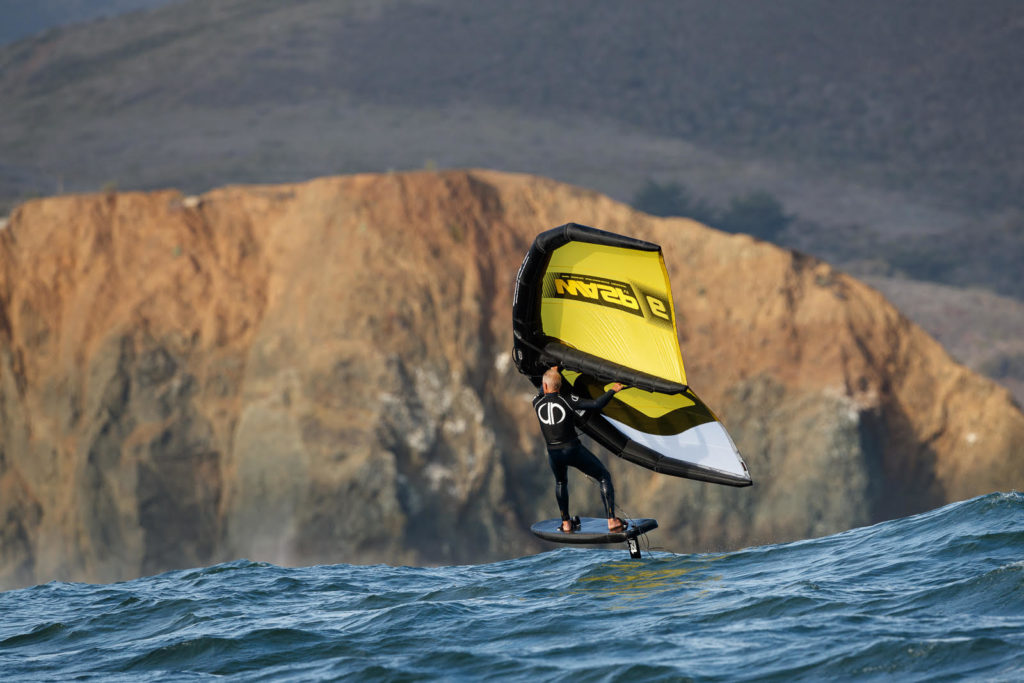
The Untold History of Kiting?
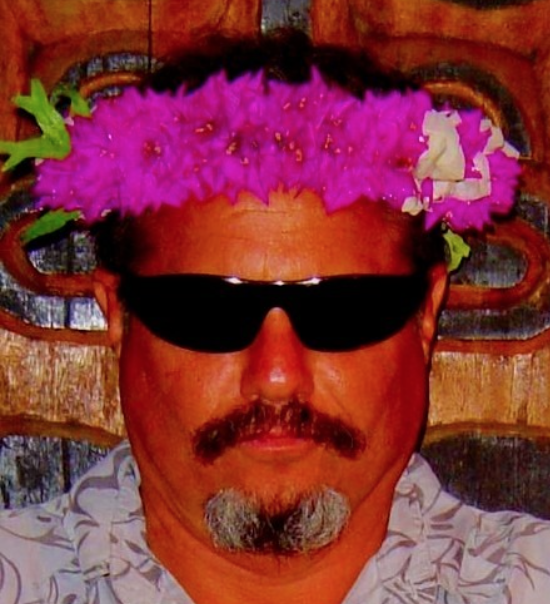
Joe Kool knows the truth, and he can prove it. It’s all on film.
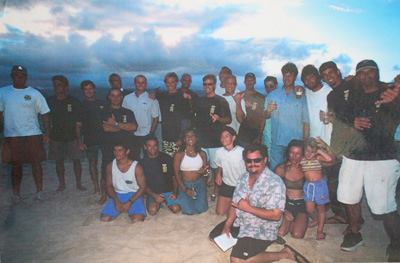
Someone once threatened to kill him if he told any of his ‘windsurfer friends’ about this break. The break was Jaws–when only a few guys were surfing it.
Flash, Chris Gilbert, Kai Lenny, the Richmond brothers, Don Montigue, Robby Naish, Laird Hamilton… Joe captured the first steps of these trailblazers.
Joe started the ‘Kiteboarding Worlds’ in Maui, which quickly became Redbull’s ‘King of the Air. With that platform, Joe shot some of the most amazing footage and experienced and produced the most memorable parties in the industry. No one has seen what Joe has seen, few have experienced what he has experienced, and no one has documented it quite like Joe.
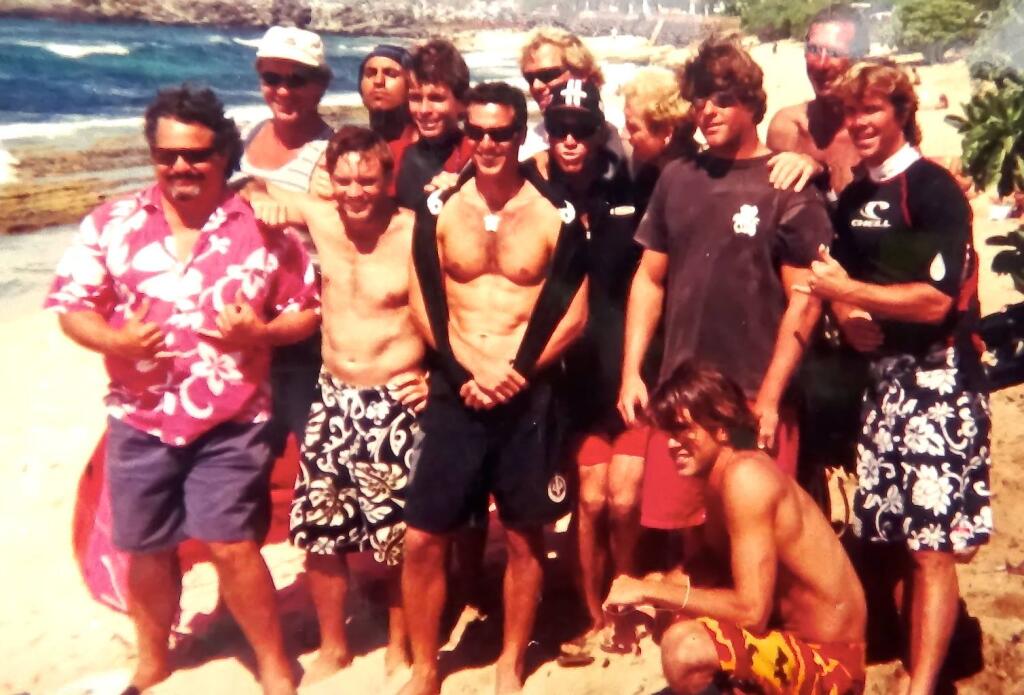
While surfing the the East Coast to warmer southern waters, Joe caught the initial wave of windsurfing in Key West in 78, where he met the young Robby Naish. Joe quickly realized there was a unique energy and aesthetic in this new sport where his background in fine arts, his attraction to adrenaline and his love for partying finally found common ground. Joe followed the stoke to Pa’ia, where he became the unofficial mayor after 25 years.
Windsurfing transitioned to kiteboarding and Joe continued to document the sport as just another manifestation of the energy and culture he first experienced after meeting Robby. While living on Maui, Joe continued to return to SF for summers. What he calls ‘the blue collar’ nature of water sports here always countered the photoshop water culture of Maui. ‘Ken Adgate could ride with anyone in Maui. Mike Zajicek is the world’s best designer. And yet they’re right here, kiting with us, as equals. That doesn’t happen on Maui.’
His love of our water culture drove Joe to move to SF permanently in ’95, and he continued to document everything he saw on and off the water. For Joe, one thing is now clear: the SF bay is on par with Maui as far as influence in the sport goes.
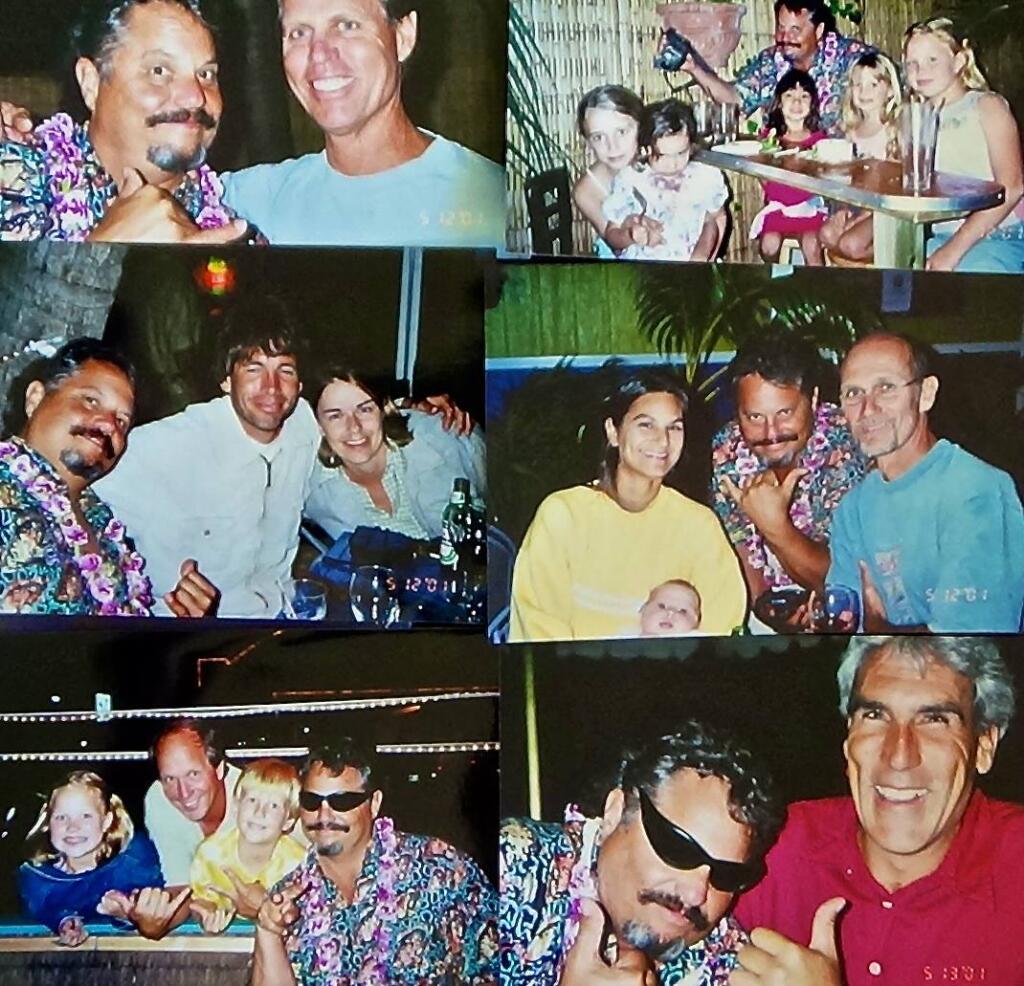
Joe is currently going through 300 hours of early kite history, cataloging every person, every place, every event he recorded that helped make this sport what it is today.
BayAreaKiteboarding.com is working with Joe to tell the history of kiting. And it isn’t always pretty.
Stay tuned…
To help improve communications in our local community, we at BayAreaKiteboarding.com are building a central repository for important event listings and other information vital to our sport. Part of this effort includes publishing a newsletter to help give everyone a quick overview of what’s going on at our major sites around the Bay. We are also working on an event calendar to focus on kiteboarding related events taking place in the Bay Area or West Coast. We will use our various Facebook forums to make kiters aware of this resource. More importantly, this is a new venture, so we need your feedback to help us improve.
i am amazed at the quality of the articles and the photos !!! keep up the good work.
doug seiler
Mayor of Bodega Bay Kite Launch Area (BBKL)
Nice job all!
Thanks Marina! We hope to improve Bay Watch over time. Let us know if you have any thoughts on issues we should address.
This is great and what awesome news about Dillon parking. That 20 bucks was a hard sell. From that to free!
Thanks Allison! The Dillon story continues to evolve. You can track some of juicier details here: https://www.ptreyeslight.com/article/changes-approved-dillon-beach-resort